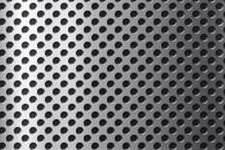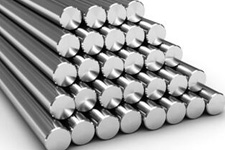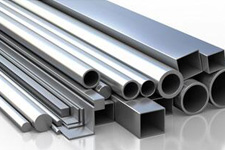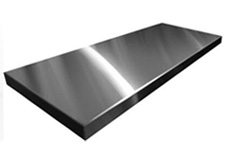What is zirconium alloys?
Zirconium alloys are solid solutions of zirconium or other metals, a common subgroup having the trade mark Zircaloy. Zirconium has very low absorption cross-section of thermal neutrons, high hardness, ductility and corrosion resistance. One of the main uses of zirconium alloys is in nuclear technology, as cladding of fuel rods in nuclear reactors, especially water reactors. A typical composition of nuclear-grade zirconium alloys is more than 95 weight percent zirconium and less than 2% of tin, niobium, iron, chromium, nickel and other metals, which are added to improve mechanical properties and corrosion resistance.
The water cooling of reactor zirconium alloys elevates requirement for their resistance to oxidation-related nodular corrosion. Furthermore, oxidative reaction of zirconium with water releases hydrogen gas, which partly diffuses into the alloy and forms zirconium hydrides. The hydrides are less dense and are weaker mechanically than the alloy; their formation results in blistering and cracking of the cladding – a phenomenon known as hydrogen embrittlement. The zirconium alloys is a non-ferrous alloy with zirconium as the matrix and other elements added. The main alloying elements are tin, niobium, iron and so on. Zirconium alloy has good corrosion resistance, moderate mechanical properties, low atomic thermal neutron absorption cross section and good compatibility to nuclear fuel in 300 ~ 400℃ high temperature and high pressure water and steam, and is mostly used as the core structural material of water-cooled nuclear reactors. Zirconium alloys produced on an industrial scale are zirconium tin series and zirconium niobium series. The grades of the former alloy are Zr-2 and Zr-4, and the typical representative of the latter is Zr-2.5Nb. In zirconium-tin alloys, alloying elements such as tin, iron, chromium and nickel can improve the material strength, corrosion resistance and thermal conductivity of corrosion resistant film, and reduce the sensitivity of surface state to corrosion.
Applications
Compounds
Most zircon is used directly in high-temperature applications. Because it is refractory, hard, and resistant to chemical attack, zircon finds many applications. Its main use is as an opacifier, conferring a white, opaque appearance to ceramic materials. Because of its chemical resistance, zircon is also used in aggressive environments, such as moulds for molten metals
Nuclear applications
Cladding for nuclear reactor fuels consumes about 1% of the zirconium supply, mainly in the form of zircaloys. The desired properties of these alloys are a low neutron-capture cross-section and resistance to corrosion under normal service conditions.[7][8] Efficient methods for removing the hafnium impurities were developed to serve this purpose.
One disadvantage of zirconium alloys is the reactivity with water, producing hydrogen, leading to degradation of the fuel rod cladding:
Zr + 2 H2O → ZrO2 + 2 H2
Hydrolysis is very slow below 100 °C, but rapid at temperature above 900 °C. Most metals undergo similar reactions. The redox reaction is relevant to the instability of fuel assemblies at high temperatures.[35] This reaction occurred in the reactors 1, 2 and 3 of the Fukushima I Nuclear Power Plant (Japan) after the reactor cooling was interrupted by the earthquake and tsunami disaster of March 11, 2011, leading to the Fukushima I nuclear accidents. After venting the hydrogen in the maintenance hall of those three reactors, the mixture of hydrogen with atmospheric oxygen exploded, severely damaging the installations and at least one of the containment buildings.
Zirconium is a constituent of the uranium zirconium hydride (UZrH) nuclear fuel used in TRIGA reactors.
Space and aeronautic industries
Materials fabricated from zirconium metal and ZrO2 are used in space vehicles where resistance to heat is needed.
High temperature parts such as combustors, blades, and vanes in jet engines and stationary gas turbines are increasingly being protected by thin ceramic layers, usually composed of a mixture of zirconia and yttria.
Medical uses
Zirconium-bearing compounds are used in many biomedical applications, including dental implants and crowns, knee and hip replacements, middle-ear ossicular chain reconstruction, and other restorative and prosthetic devices. Zirconium binds urea, a property that has been utilized extensively to the benefit of patients with chronic kidney disease. For example, zirconium is a primary component of the sorbent column dependent dialysate regeneration and recirculation system known as the REDY system, which was first introduced in 1973. More than 2,000,000 dialysis treatments have been performed using the sorbent column in the REDY system. Although the REDY system was superseded in the 1990s by less expensive alternatives, new sorbent-based dialysis systems are being evaluated and approved by the U.S. Food and Drug Administration (FDA). Renal Solutions developed the DIALISORB technology, a portable, low water dialysis system. Also, developmental versions of a Wearable Artificial Kidney have incorporated sorbent-based technologies.




